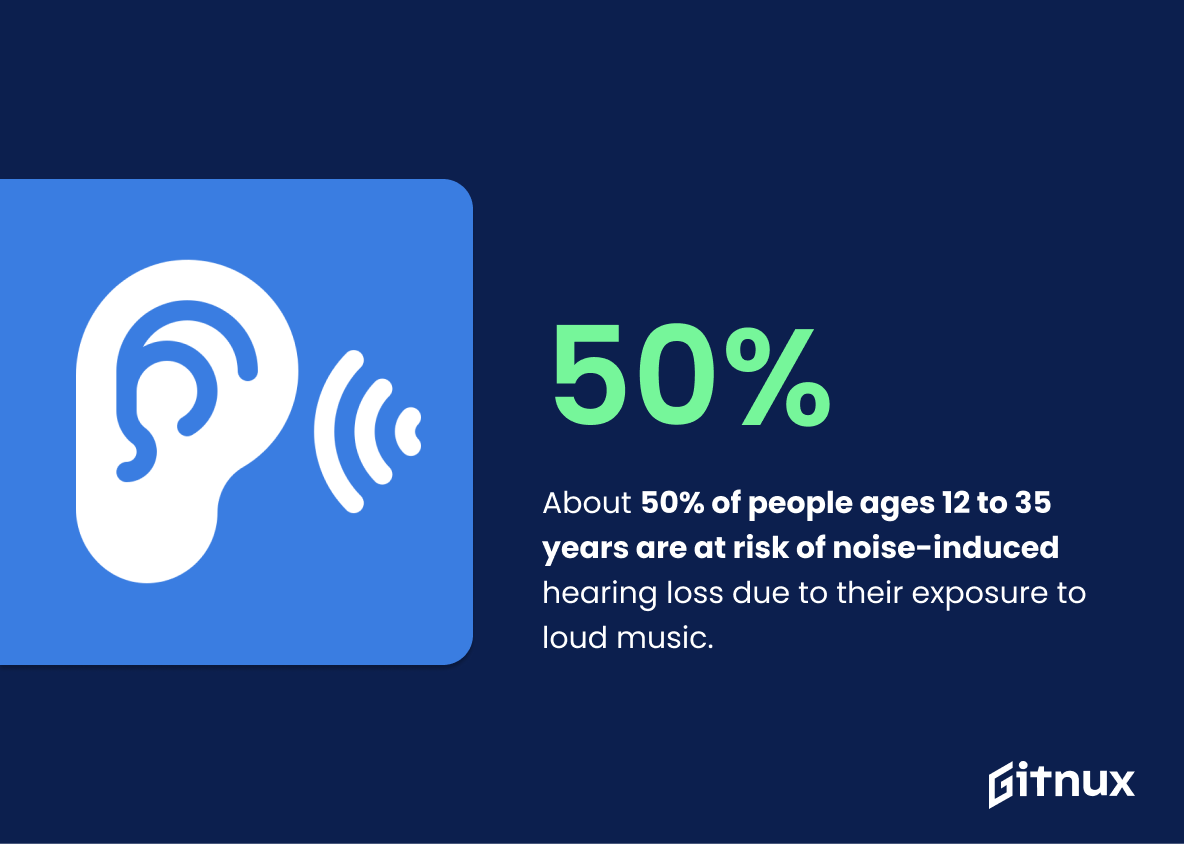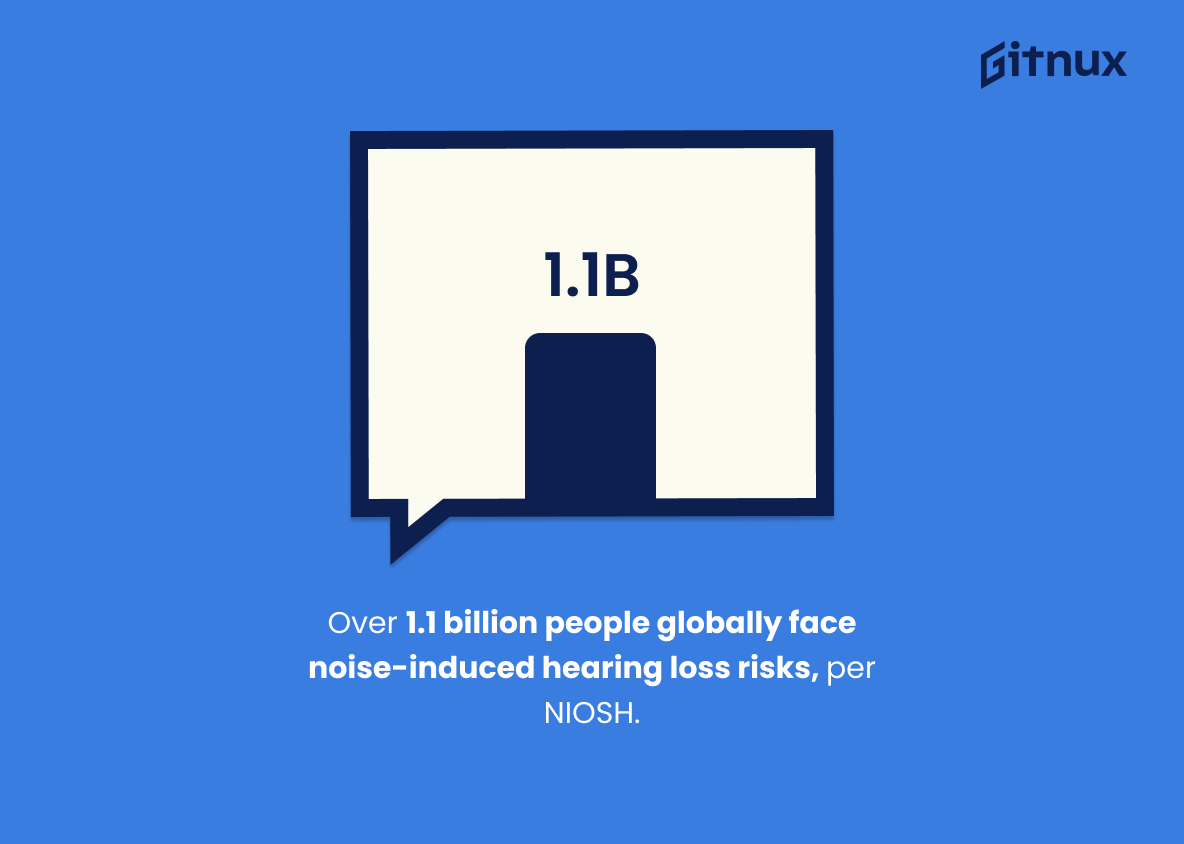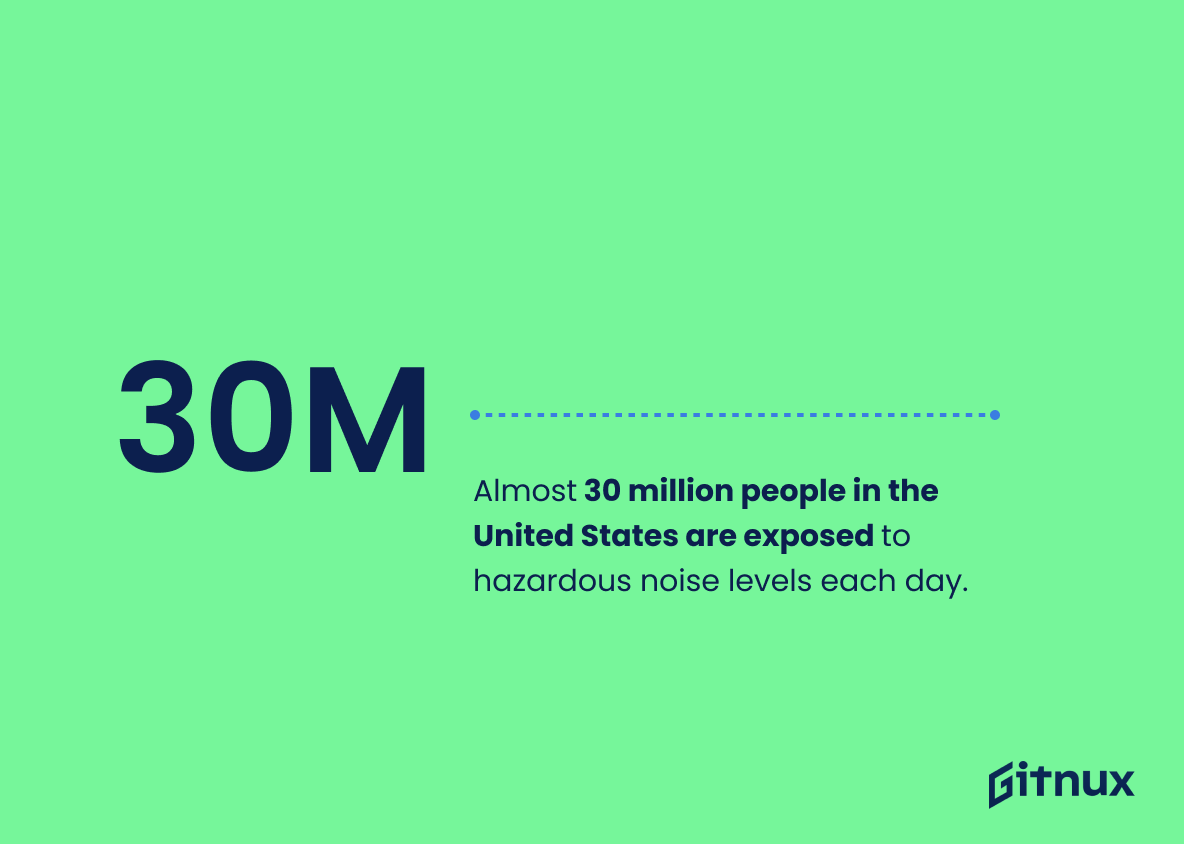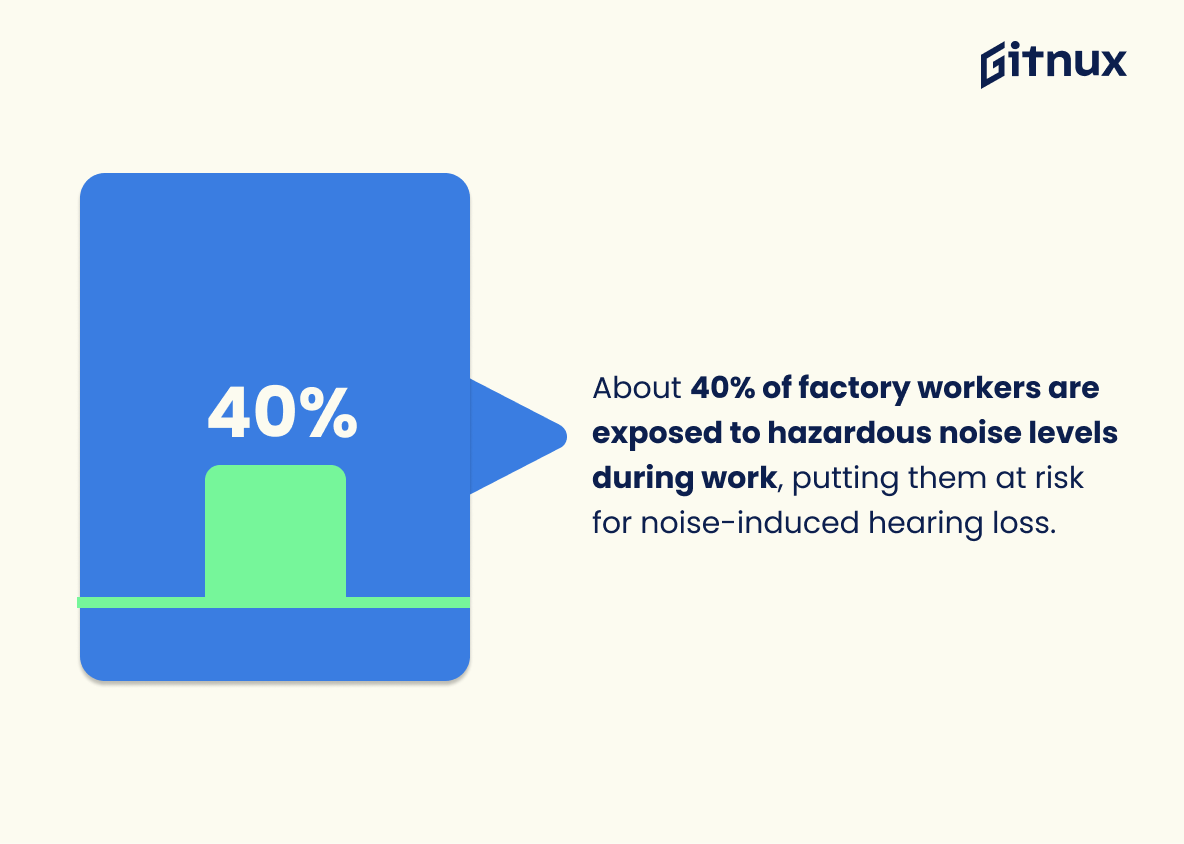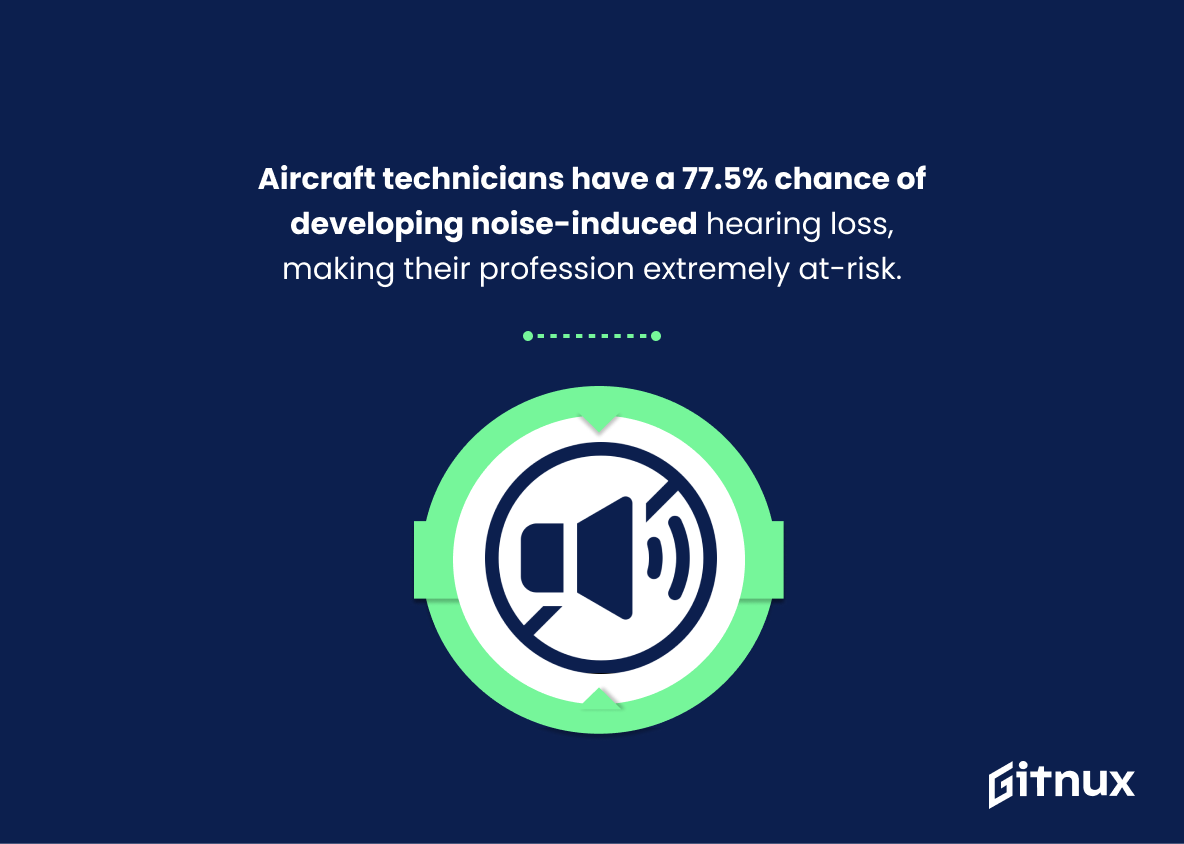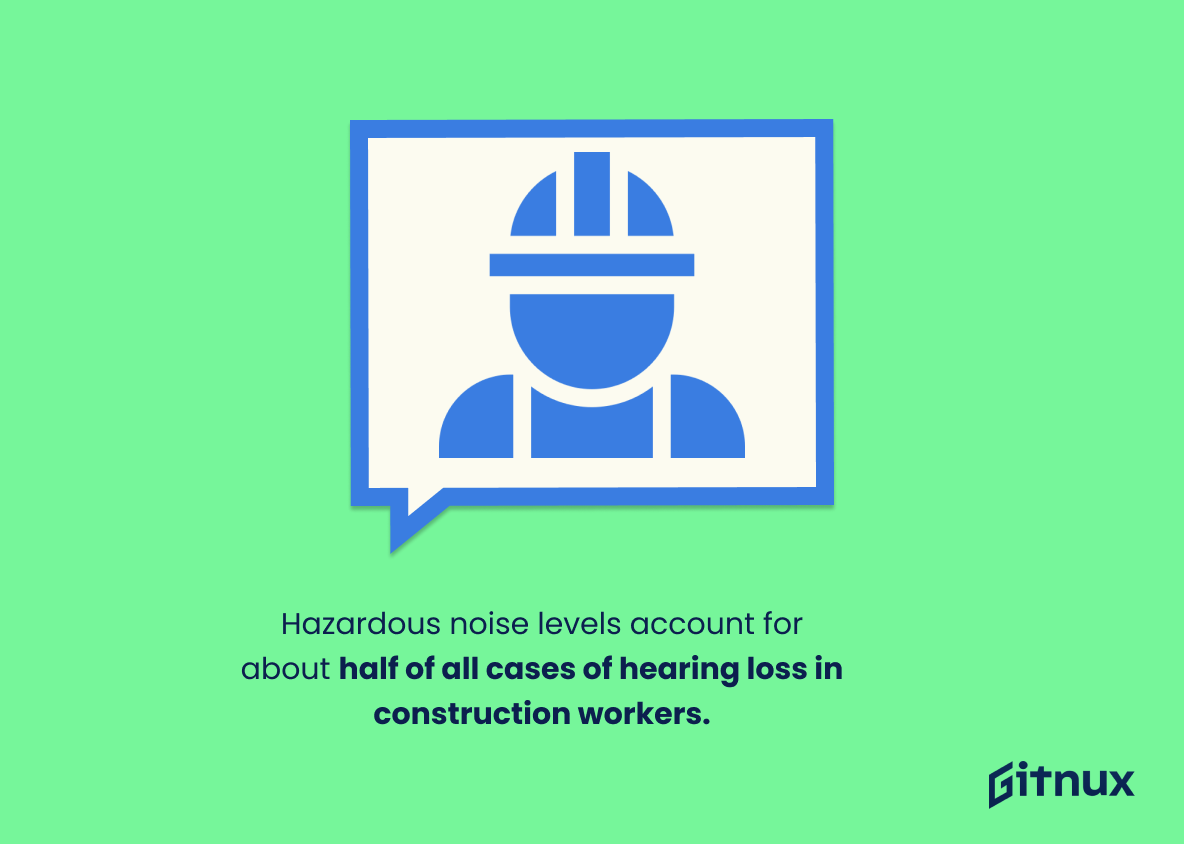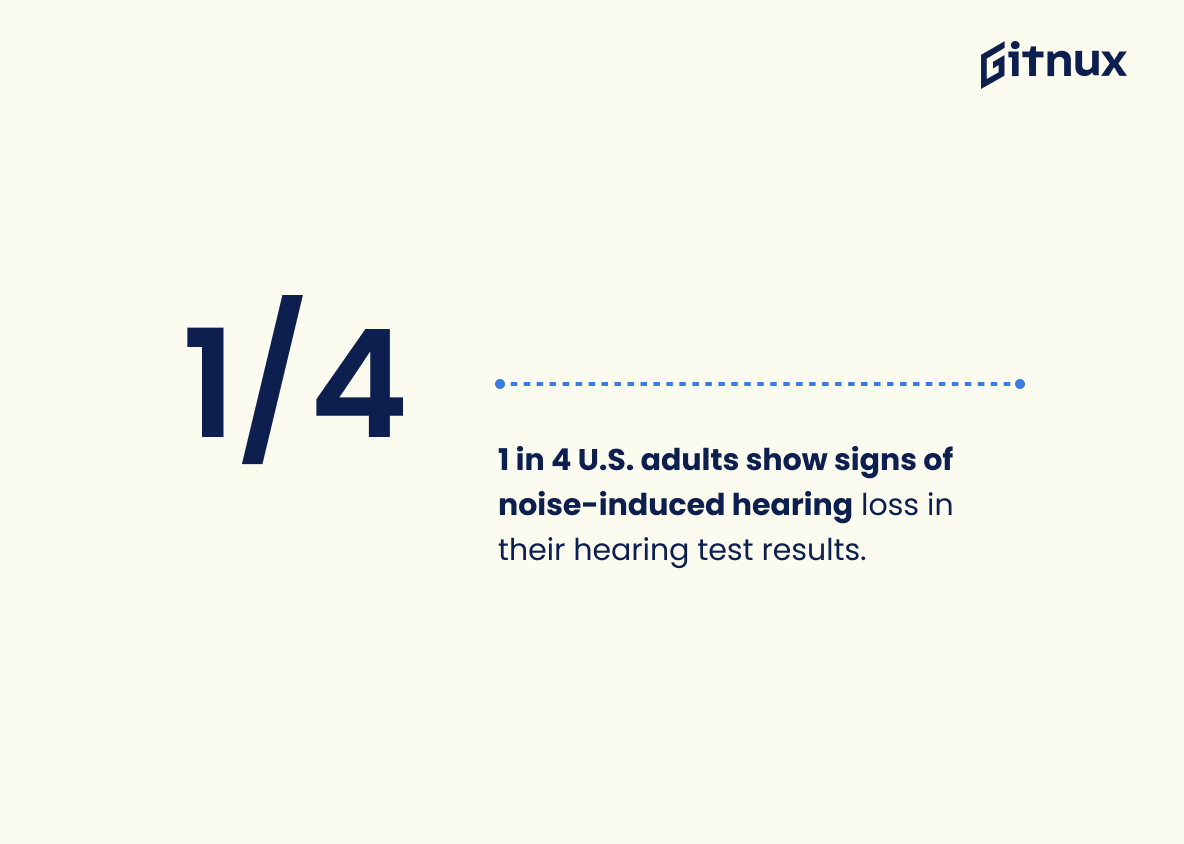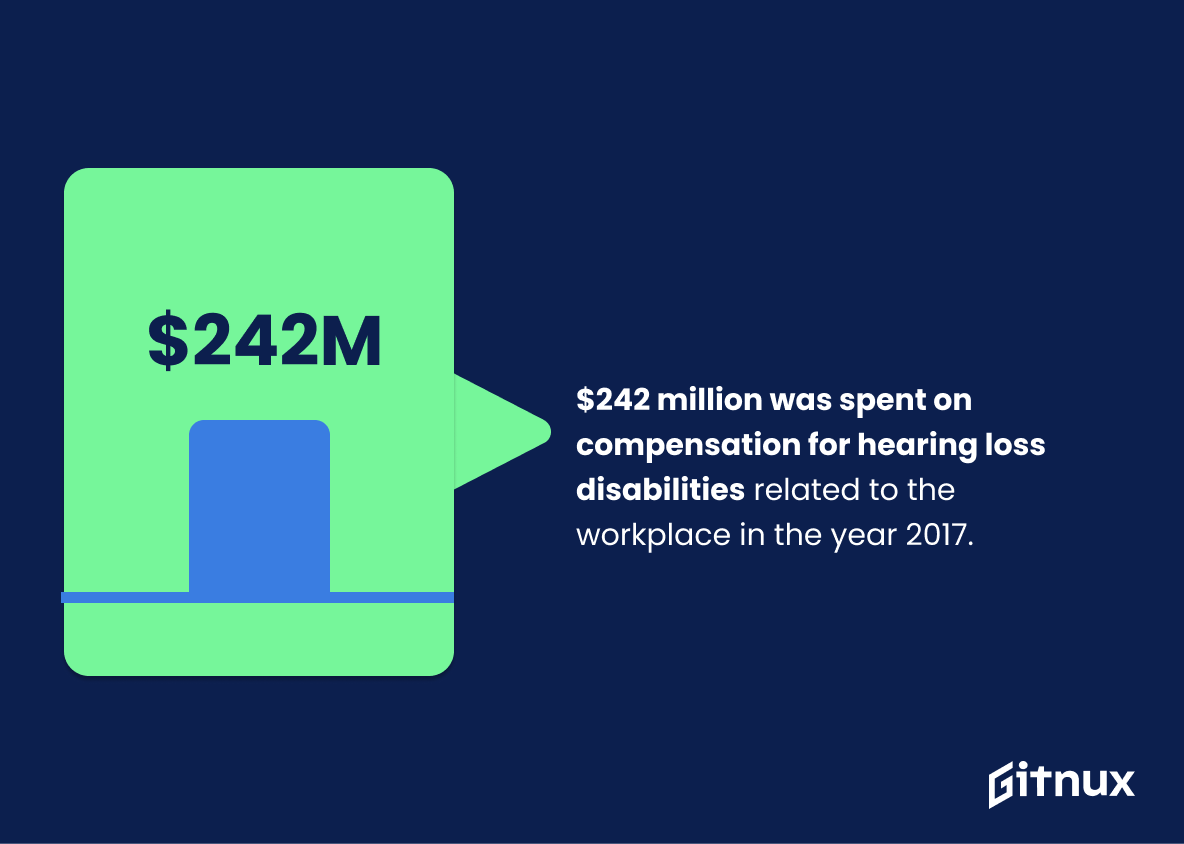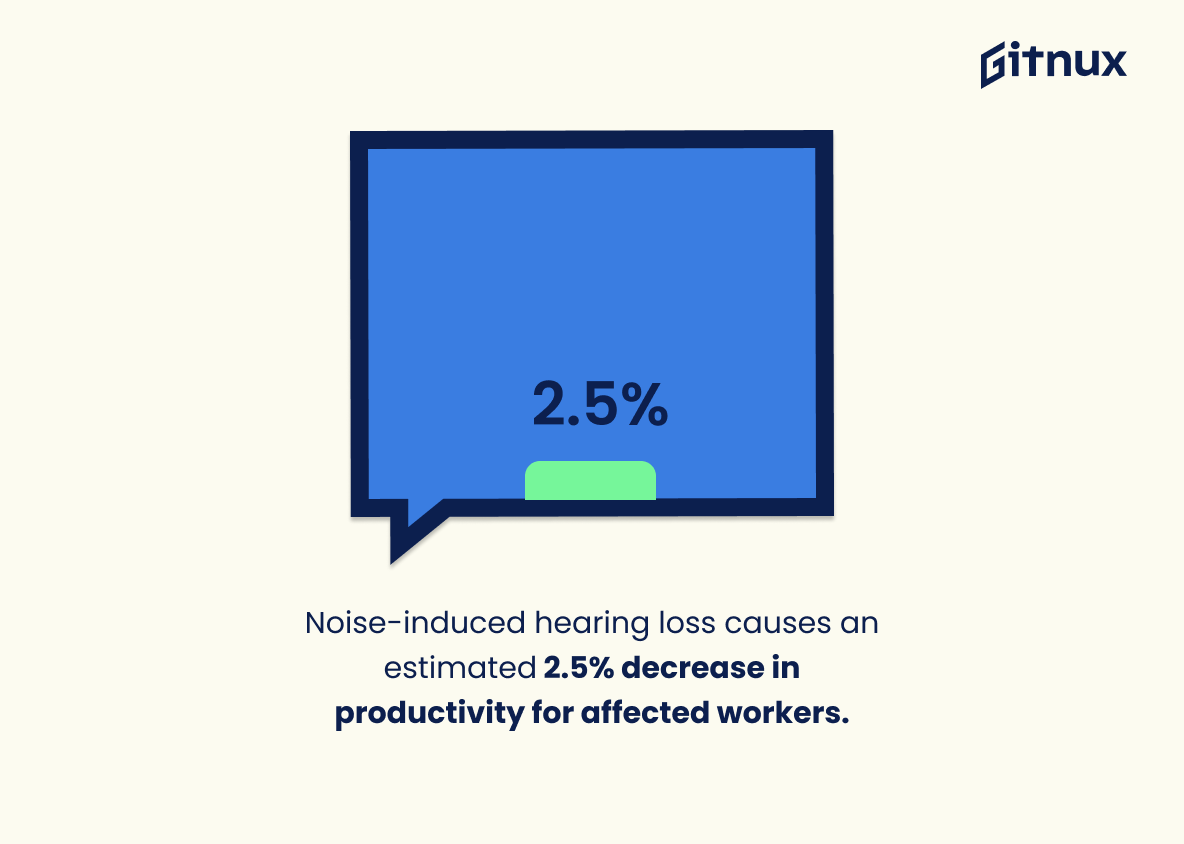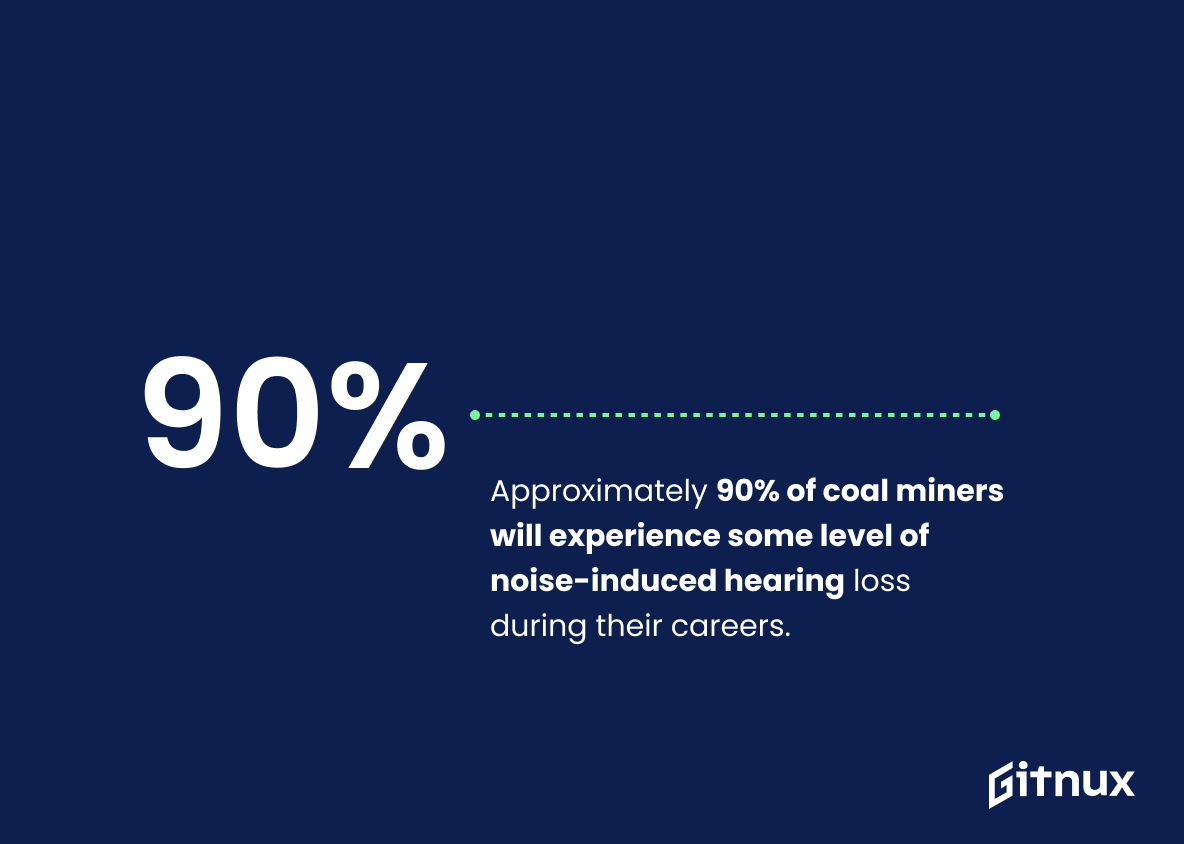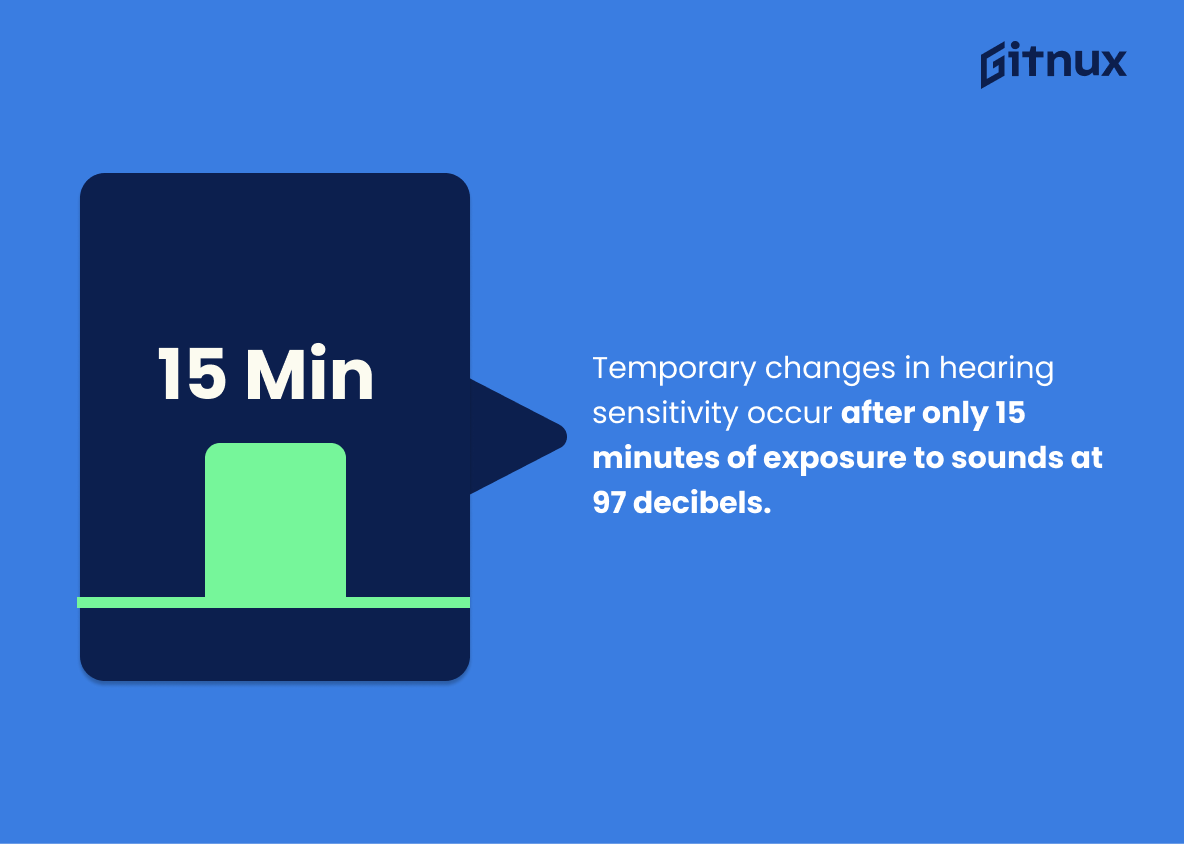Noise-induced hearing loss is a serious and growing problem worldwide. According to the Centers for Disease Control and Prevention, approximately 22 million workers are exposed to hazardous noise levels at work each year. A study published in PubMed estimates that 10% of the world population suffers from noise-induced hearing loss. The World Health Organization reports that 50% of people ages 12 to 35 years are at risk due to their exposure to loud music. The National Institute for Occupational Safety and Health estimates 1.1 billion people globally may be affected by this condition, while almost 30 million Americans face daily exposure risks according to the American Speech-Language Hearing Association (ASHA).
Factory workers have an especially high chance of developing noise-induced hearing loss with 40% being exposed during work hours as reported by NCBI PMC Journals Library; aircraft technicians have a 77.5%, hunters 95%, musicians 83%. Noise induced hearing loss is also common among older adults – it’s estimated that it affects 3 out 4 U.S adults based on census data – making it one of the most prevalent chronic health issues they face today . It can even affect children aged 6–19 where 15 % show measurable signs in either or both ears according CDC research findings .
The good news is that NIHL is 100 percent preventable yet still remains a major issue across all industries costing $242 million dollars spent on compensation related disabilities alone in 2017 per Bureau Labor Statistics report , 60 % deployed military personnel facing potential damage due NIHl per Pubmed article , 2,5 % decrease productivity amongst those already suffering from NIHL as found by NCBI PMC Journal library & 17 % cases attributable occupational exposures as stated Ear & Hearing journal publication . Even more alarming – temporary changes occur after only 15 minutes 97 decibels sound level which could lead permanent damages if not addressed properly via Noisy Planet website information page .
This statistic is a stark reminder of the prevalence of hazardous noise levels in the workplace, highlighting the need for employers to take action to protect their employees from Noise Induced Hearing Loss. It serves as a call to action for employers to ensure that their workers are not exposed to dangerous levels of noise, and to take steps to reduce the risk of hearing loss.
Noise-induced hearing loss affects around 10% of the world population.
This statistic is a stark reminder of the prevalence of noise-induced hearing loss, highlighting the need for greater awareness and education about the risks of excessive noise exposure. It serves as a call to action for individuals, organizations, and governments to take steps to reduce the risk of hearing loss and protect the hearing of people around the world.
Noise Induced Hearing Loss Statistics Overview
About 50% of people ages 12 to 35 years are at risk of noise-induced hearing loss due to their exposure to loud music.
This statistic is a stark reminder of the prevalence of noise-induced hearing loss among young people. It highlights the need for greater awareness of the risks associated with loud music and the importance of taking steps to protect hearing health.
The National Institute for Occupational Safety and Health estimates that 1.1 billion people worldwide are at risk of noise-induced hearing loss.
This statistic is a stark reminder of the sheer magnitude of people who are at risk of noise-induced hearing loss. It is a sobering reminder of the importance of taking steps to protect our hearing and to raise awareness of the dangers of noise-induced hearing loss.
Almost 30 million people in the United States are exposed to hazardous noise levels each day.
This statistic is a stark reminder of the prevalence of hazardous noise levels in the United States. It is a call to action to take steps to protect the hearing of millions of people who are exposed to these dangerous levels of sound every day. It is a reminder that noise induced hearing loss is a real and serious issue that needs to be addressed.
About 40% of factory workers are exposed to hazardous noise levels during work, putting them at risk for noise-induced hearing loss.
This statistic is a stark reminder of the prevalence of noise-induced hearing loss in the workplace. It highlights the fact that a significant portion of factory workers are exposed to hazardous noise levels, putting them at risk of developing this condition. It serves as a warning to employers and employees alike to take the necessary steps to protect their hearing.
Aircraft technicians have a 77.5% chance of developing noise-induced hearing loss, making their profession extremely at-risk.
This statistic is a stark reminder of the dangers of noise-induced hearing loss in the aircraft technician profession. It highlights the fact that these technicians are at an alarmingly high risk of developing this condition, and should be taken seriously. It serves as a warning to those in the profession to take the necessary precautions to protect their hearing.
Noise-induced hearing loss is the third most common chronic health issue in older adults.
This statistic is a stark reminder of the prevalence of noise-induced hearing loss among older adults. It serves as a wake-up call to take the necessary steps to protect our hearing health, as it is a chronic health issue that can have a lasting impact on our quality of life.
Hazardous noise levels account for about half of all cases of hearing loss in construction workers.
This statistic is a stark reminder of the prevalence of hearing loss in construction workers due to hazardous noise levels. It highlights the importance of taking the necessary steps to protect workers from the dangers of excessive noise exposure. It serves as a warning to employers and workers alike that hearing loss is a real and serious risk in the construction industry.
1 in 4 U.S. adults show signs of noise-induced hearing loss in their hearing test results.
This statistic is a stark reminder of the prevalence of noise-induced hearing loss in the United States. It serves as a wake-up call to those who may not be aware of the dangers of excessive noise exposure and the importance of protecting one’s hearing. It also highlights the need for more education and awareness about the risks of noise-induced hearing loss and the importance of taking preventive measures.
$242 million was spent on compensation for hearing loss disabilities related to the workplace in the year 2017.
This statistic serves as a stark reminder of the financial burden that Noise Induced Hearing Loss (NIHL) can have on individuals and businesses alike. It highlights the importance of taking preventative measures to protect workers from the dangers of excessive noise in the workplace. It also serves as a call to action for employers to invest in noise-reduction strategies and to ensure that their employees are properly trained and equipped with the necessary safety gear.
60% of deployed military personnel are exposed to noise levels that can cause noise-induced hearing loss.
This statistic is a stark reminder of the prevalence of noise-induced hearing loss among deployed military personnel. It highlights the need for greater awareness and education about the risks of noise-induced hearing loss, as well as the importance of taking preventative measures to protect hearing health.
Around 15% of children aged 6-19 have measurable signs of noise-induced hearing loss in one or both ears.
This statistic is a stark reminder of the prevalence of noise-induced hearing loss among children. It serves as a warning that this condition is not something to be taken lightly, and that it is a real issue that needs to be addressed. It is a call to action for parents, educators, and healthcare professionals to be aware of the risks and take steps to protect children from the dangers of noise-induced hearing loss.
Noise-induced hearing loss causes an estimated 2.5% decrease in productivity for affected workers.
This statistic is a stark reminder of the economic impact of noise-induced hearing loss. It highlights the fact that not only does this condition have a detrimental effect on the quality of life of those affected, but it also has a significant financial cost. This statistic serves as a powerful reminder of the importance of taking steps to prevent and reduce noise-induced hearing loss in the workplace.
Approximately 90% of coal miners will experience some level of noise-induced hearing loss during their careers.
This statistic is a stark reminder of the dangers of noise-induced hearing loss in the coal mining industry. It highlights the need for employers to take the necessary steps to protect their workers from the long-term effects of noise exposure. It also serves as a warning to those considering a career in coal mining, that they should be aware of the risks associated with the job.
Temporary changes in hearing sensitivity occur after only 15 minutes of exposure to sounds at 97 decibels.
This statistic is a stark reminder of the potential damage that can be done to our hearing in a short amount of time. It highlights the importance of taking precautions to protect our hearing from loud noises, as even a brief exposure to sound at 97 decibels can have a lasting impact on our hearing sensitivity.
Conclusion
Noise-induced hearing loss is a serious and growing problem worldwide, with an estimated 1.1 billion people at risk of developing it due to their exposure to hazardous noise levels. The statistics presented in this blog post demonstrate the prevalence of noise-induced hearing loss across different age groups, professions, and countries.
From factory workers to musicians and military personnel, many individuals are exposed daily to sounds that can cause permanent damage if not properly managed or prevented through protective measures such as earplugs or soundproofing materials. Noise-induced hearing loss is 100% preventable yet still remains one of the most common chronic health issues among adults today – making it essential for everyone to take steps towards protecting their ears from loud noises whenever possible.
References
0. – https://www.who.int
1. – https://www.noisyplanet.nidcd.nih.gov
2. – https://www.pubmed.ncbi.nlm.nih.gov
3. – https://www.asha.org
4. – https://www.ncbi.nlm.nih.gov
5. – https://www.bls.gov
6. – https://www.nidcd.nih.gov
7. – https://www.cdc.gov
8. – https://www.census.gov
